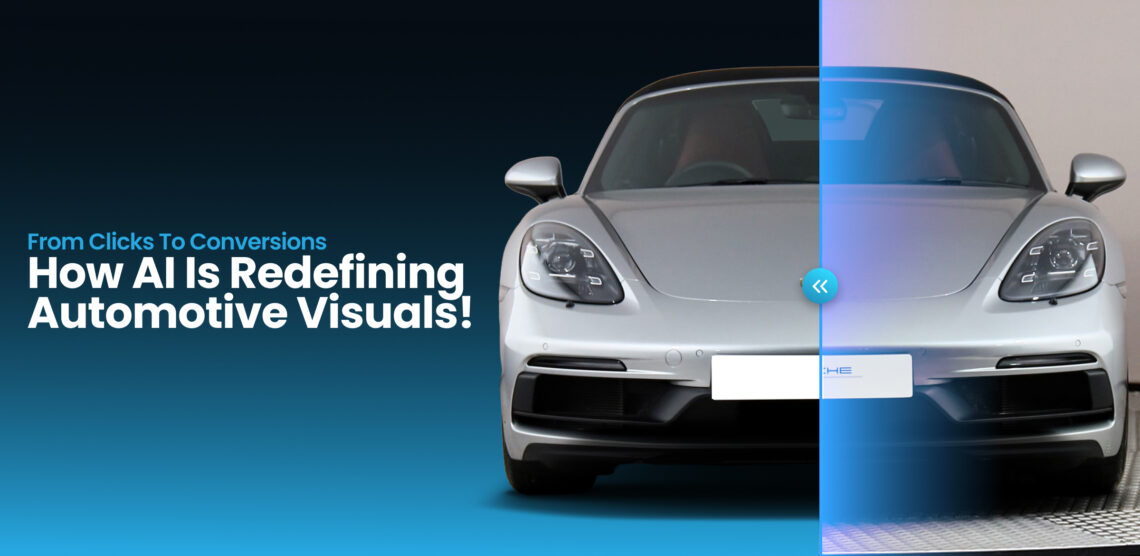Let’s be real, automotive photography has always had its own aura. It’s not just about photographing cars; it’s about capturing power, design, motion, and a certain lifestyle all in one frame. But in 2025, something big is shifting in the post-production process. Enter AI. And no, not in the vague, overhyped “robots are taking over” way. We’re talking about real, tangible change, especially when it comes to automotive photo retouching .
AI technologies are changing with lightning speed how car photos are captured, retouched, and even sold to dealerships. While editing remains manual, automation is performing some things quicker, smarter, and larger-scale than ever. The game, though, is altered. In 2025, artificial intelligence is no longer a buzzword, it’s a genuine handy tool which is transforming the entire process of an automotive photographer. Although it is impossible to duplicate a human eye for detail and creativity, AI is doing all of the heavy lifting, and the whole car photo retouching industry is quicker, more uniform, and cheaper than ever before.
For further insights, get a deeper dive into Automotive Retouching Services: Techniques That Drive Sales
1.From Hours to Minutes: Speeding Up Retouching Without Cutting Corners
Ask any photographer who’s worked on a car shoot, and they’ll tell you—retouching isn’t quick. Dust on the hood, reflections on windows, odd lighting, distracting backgrounds—it all adds up to hours in front of a screen. But with AI-powered automotive photo retouching, those time-consuming edits can now happen in a fraction of the time.
In 2025, tools are smart enough to identify, make and model contours, detect unwanted reflections, and correct uneven lighting automatically, without messing up the vibe of the original shot. What used to take 2–3 hours per image can now be done in 15 minutes, freeing creatives to focus on the storytelling part of photography rather than the technical cleanup.
2. Background Swaps That Actually Look Real
Changing the background in car photography used to be tricky. Either it looked obviously edited or didn’t match the lighting and shadows. But AI has stepped up. Today’s automotive photo retouching tools can analyze light direction, car positioning, and even paint finish to generate realistic, adaptive backgrounds.
This is huge for dealerships and sellers who want to maintain brand consistency across hundreds of car images without reshooting every vehicle in the perfect location. With just a few clicks, a car shot in a crowded garage can be transformed into a clean, sunlit road or a branded turntable-style setup, without looking fake.
3. Consistent Edits at Scale for Online Marketplaces
For businesses selling cars online whether it’s a premium dealership or a used car aggregator: image consistency is everything. Buyers scroll fast. The photos need to load quickly, look clean, and have a uniform style. That’s where AI is absolutely dominating in 2025.
Automated automotive photo retouching platforms now offer batch processing with built-in style presets, making it possible to edit hundreds of car images with the same tone, lighting, and format, while still giving each image that polished, high-quality finish.
This kind of scalability used to be limited to teams of editors. Now, a single person with the right AI tools can get it done just as efficiently.
4. Minor Flaws? Gone. Paint Streaks? Fixed. Reflections? Controlled.
One of the most underrated (and frankly annoying) parts of car photography is dealing with reflective surfaces. Even with careful planning, you’ll still get unintentional reflections, tiny scratches, or uneven gloss.
AI tools in 2025 are not only detecting these micro imperfections but correcting them in a way that doesn’t make the car look overly edited. In fact, most platforms now offer “realism sliders” that let you control how natural or enhanced the final image feels. That level of nuance is a big leap forward for automotive photo retouching, especially for brands that want their visuals to feel premium but authentic.
5. The Photographer’s Role Isn’t Going Anywhere
Let’s clear something up, AI isn’t replacing creativity. It’s just removing the repetitive bits. Good lighting, great composition, and the ability to capture the soul of a machine? That still comes down to the photographer.
What AI is doing, though, is making automotive photo retouching more accessible and less time-intensive. It lets photographers spend more time on shoots, businesses get their listings live faster, and creatives bring their ideas to life without getting stuck in the weeds of background cleanup or dust removal.
Conclusion
As AI continues to evolve, automotive photo retouching is becoming less about hours of manual edits and more about smart workflows, style automation, and on-brand consistency.
And for those who embrace the shift, the results speak for themselves, quicker turnarounds, cleaner visuals, and ultimately, better-performing images in an online-first world. Whether you’re a solo photographer or a full-scale automotive brand, AI isn’t your competition, it’s your new favorite tool. It’s an exciting time, where technology is not replacing human skill but empowering it, allowing the final product to be even more breathtakingly beautiful and appealing to the modern car buyer.

